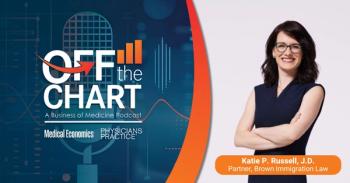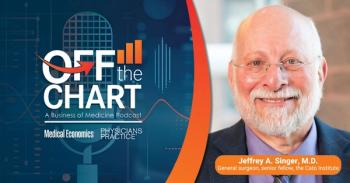
Addressing Barriers to Delivering the Medicare Annual Wellness Visit
Here are four top barriers physicians face when considering the Medicare Annual Wellness Visit for their patients and how to overcome them for better outcomes.
The Medicare Annual Wellness Visit (AWV) is one of the key components to changing healthcare for the better. The visit has the capability of improving quality, decreasing costs, and engaging patients. In addition, the visit is well reimbursed and has a high RVU value.
So why are physicians not conducting these visits? I would like to address the barriers that discourage physicians from delivering the AWV and acknowledging how important it is to increase utilization of this valuable service.
1. The AWV is complex, has many components, and is time consuming. This may be true if the provider is still practicing medicine in a pre-health information technology environment, but now there are numerous technological tools to make the visit less time-consuming and efficient. CMS encourages innovative ideas to deliver the visit as the law specifies that "the Health Risk Assessment (HRA) guidelines will be developed to provide that HRAs may be furnished through an interactive telephonic or web-based program; may be offered during the encounter with a healthcare professional or through community-based prevention programs, or may be provided through any other means the [HHS] Secretary determines appropriate to maximize accessibility and ease of use by beneficiaries"
2. Providers are not able to make paradigm shift. There are many providers that believe their "sick" patients will suffer if they provide exam rooms and time for wellness and prevention. They may not know that the World Health Organization released the World Health Report and ranked the U.S. the 37th best healthcare system. Treating "sick" patients and ignoring wellness and prevention is not the answer to provide quality healthcare. Providers must make a paradigm shift and spend the time to incorporate AWVs into their practices.
3. There is no convincing evidence that preventive services will provide quality and decrease costs in the Medicare population. The Annual Wellness Visit is not just about providing preventive services. It also encourages individuals to take an active role in accurately assessing and managing their health, and consequently improve their well-being and quality of life. Thus, a main purpose of the AWV is achieved by collecting information (with an HRA) relevant to effective patient engagement and providing feedback to the patient that is welcome by the patient and is actionable. An HRA involves collecting and analyzing health-related data used by health providers to evaluate the health status or health risk of an individual. In this respect, it is a valuable tool for identifying significant risk in a "managed care organization" or "at-risk entity."
4. The AWV does not integrate with a practice's current EHR. Most current EHRs provide templates for delivering the AWV. They do not ensure providing all the necessary components of the visit. There are completely automated solutions that guarantee compliance with all CMS-required components and offer additional built-in tools that automate collection of data that can be used for business and clinical intelligence. These automated solutions have integration capability, but in many instances require cooperation from the EHR vendor. The provider in many cases must decide if the value-add with the automated solution is worth the 15 minutes required by an administrative assistant to double input the data.
In conclusion, there are automated solutions that enable both physicians and nonphysician providers the ability to deliver an efficient cost-effective AWV. In addition, valuable data can be collected to make business and clinical decisions real-time. Providers must make a paradigm shift and acknowledge the importance of wellness and prevention in their practices.
Newsletter
Optimize your practice with the Physicians Practice newsletter, offering management pearls, leadership tips, and business strategies tailored for practice administrators and physicians of any specialty.









